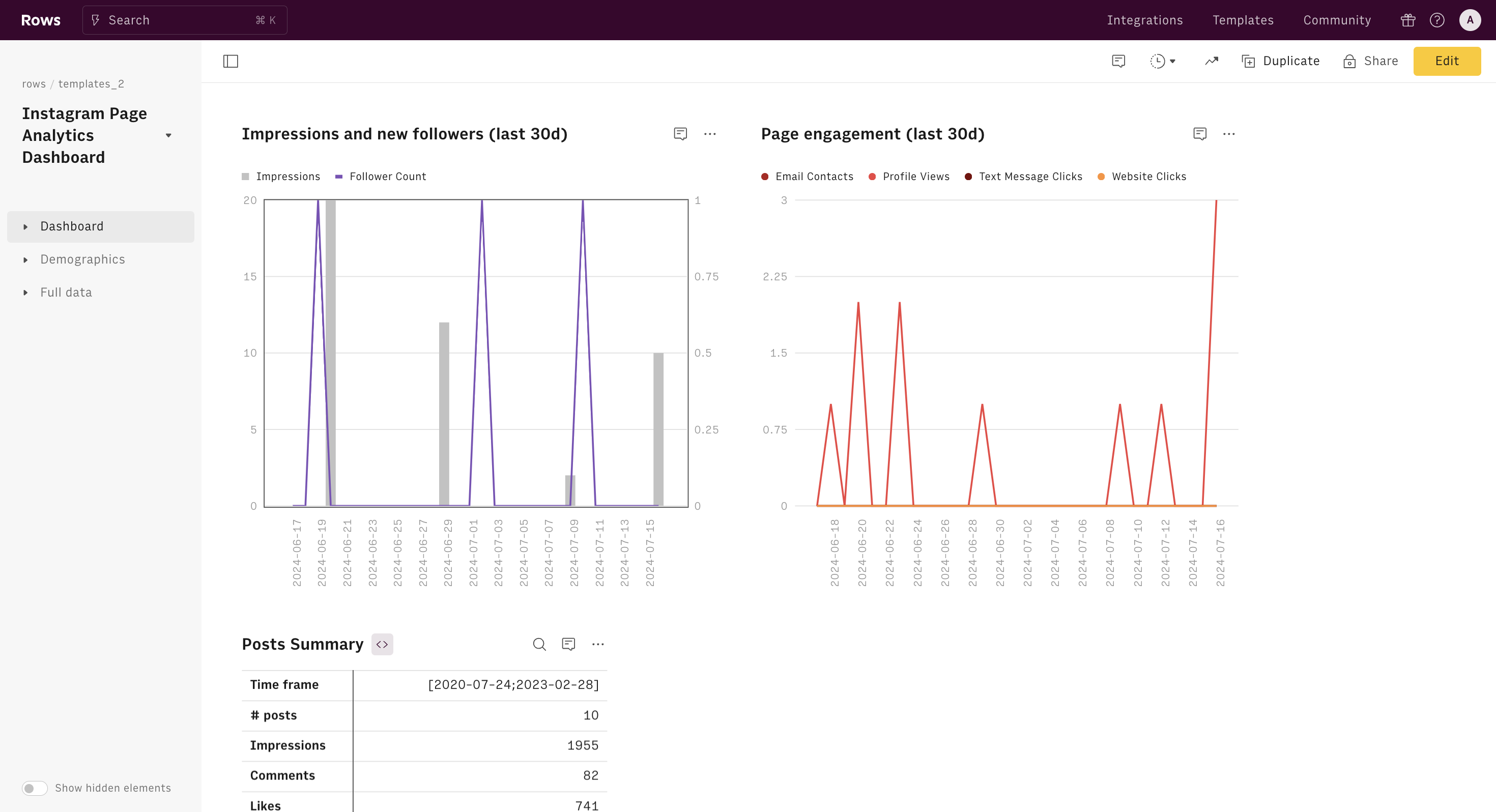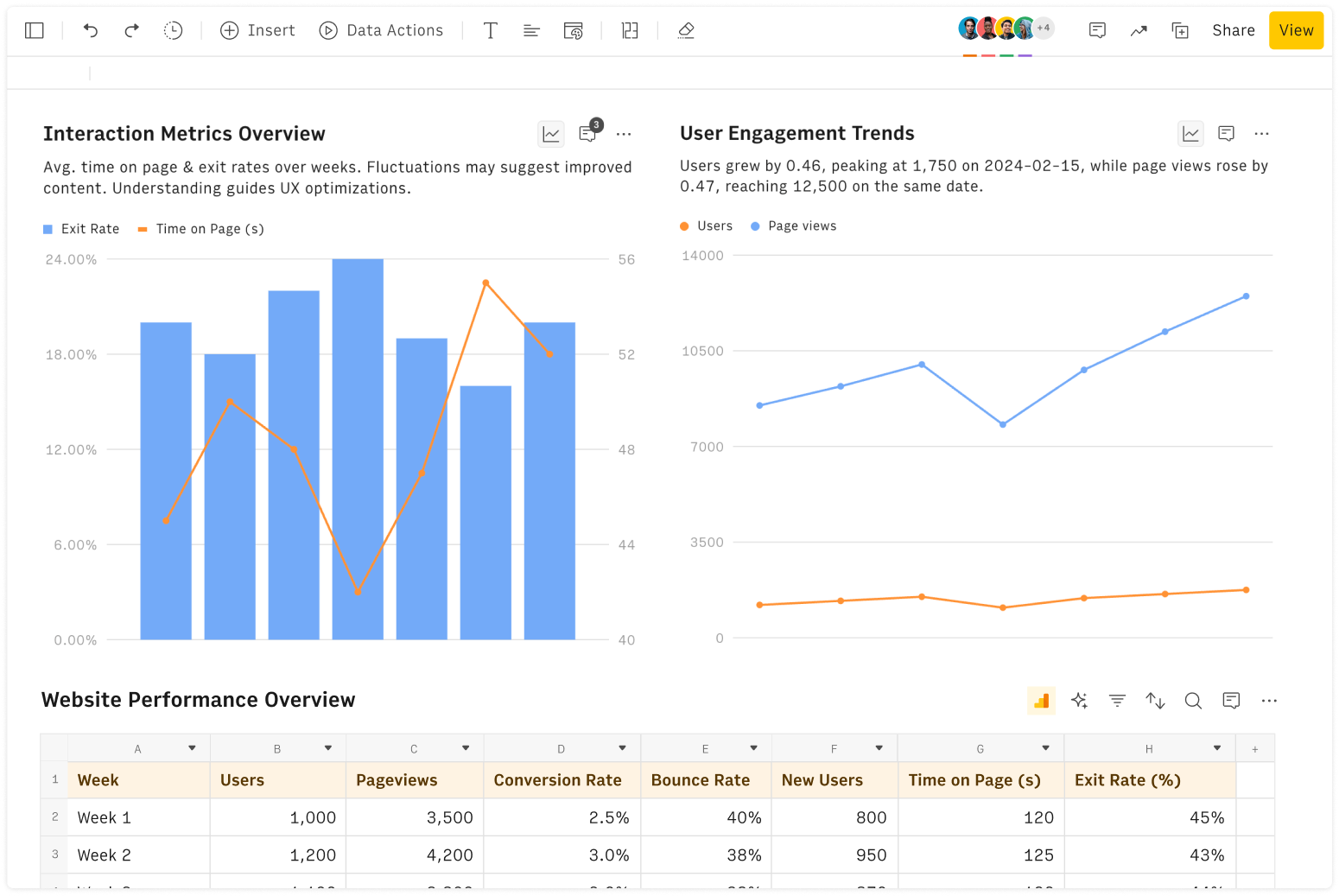What is an HTTP Request Tester?
The HTTP Request Tester is a online API tester that allows you to test HTTP requests to any APIs to verify their functionality and retrieve data. By specifying the endpoint and headers, you can test how the API responds and troubleshoot any issues.
This HTTP Request Tester has been built in Rows and combines the familiarity of spreadsheets with the power of a fully online API tester.
Rows is a modern spreadsheet editor that comes with a catalog of over 50 built-in data integrations, that bring live data from platforms like Google Analytics, Search Console, Notion, and databases directly into your spreadsheet. Together with our custom API request function, you can create complex automated workflows that involve your entire tech stack.
With Rows you can make API calls directly on the spreadsheet, visualize incoming data in JSON or table format, and manipulate it with all the typical spreadsheet functions you already know. This is possible thanks to Rows' ability to handle JSONs in the grid natively. Try it now!
How to test Rest API
In the context of API testing, setting up a GET request requires you to become familiar with the following variables:
Type of HTTP Call
This HTTP Request Tester supports GET requests, which are used to retrieve data from a specified resource. Rows natively supports POST, PUT, and PATCH requests too, with specific proprietary function.
Parameters for Rest API test
- Endpoint: The URL where your API is accessible. For example, `https://api.weather.com/v3/wx/forecast`.
- Headers: key-value pairs sent along with the request to provide additional information, such as authentication tokens. Example: `Authorization: Bearer your_api_key`.
- Values: specific parameters that the API expects in the query string to filter or specify the request further.
To test your first request, all you need to do is:
1. Enter the endpoint URL into the designated cell. This is the address where your API is accessible.
2. Add Headers: specify any necessary headers in the appropriate cells. Headers are used for authentication or to pass additional information with the request. Example: `Authorization: Bearer your_api_key`.
3. Define Values: if the API requires specific parameters, enter these values in the designated cells to refine the request.
Our GET function will run the request and display the content of the response in the appropriate cell, as a beautified JSON. To help you visualize the full content, we chose not to expand the content as a table, however, any response can be turned into a table format to allow for better data management. In so doing, any data point will be stored in a cell, and reference and further manipulation can be performed as in a normal spreadsheet table.
Real-world API Test Examples
Testing API online with HTTP requests is common among product managers, software developers, or data engineers. A few examples include:
Weather Data Retrieval
Description: This endpoint is designed to retrieve weather forecast data for a specified location
Endpoint: https://api.weather.com/v3/wx/forecast
Headers: Authorization: Bearer your_api_key
Values: location=London
Outcome: Displays the weather forecast for London directly in your spreadsheet
Stock Price Checker
Endpoint: https://api.polygon.io/v1/open-close/{stocksTicker}/{date}
Headers: Authorization: Bearer your_api_key
Values: stocksTicker=AAPL, date=2023-05-14
Outcome: Shows the latest stock price for Apple Inc. in the spreadsheet.
Description: This endpoint provides the open and close prices for a specified stock symbol on a given date
Backlink Retrieval
Description: this endpoint is designed to retrieve backlink data for a specified domain from Ahrefs.
Endpoint: https://apiv2.ahrefs.com?from=backlinks&target=ahrefs.com&mode=domain&limit=2&order_by=ahrefs_rank%3Adesc&output=json
Headers: Authorization: Bearer your_api_key
Values: target=ahrefs.com, mode=domain, limit=2, order_by=ahrefs_rank:desc, output=json
Outcome: displays the top two backlinks for the specified domain in the spreadsheet
These examples showcase how API testing is a key step to build workflows that integrate real-time data into applications, giving in decision-making and data analysis.
Benefits of online API testing
This HTTP Request Tester offers a seamless way to API testing, a crucial step to manage data workflows on a spreadsheet. It eliminates the need for complex external UI and allows you to leverage common spreadsheet functions to manipulate and transform incoming data, enhancing efficiency and productivity in managing API-driven tasks.
The integration with Rows allows you to:
Leverage familiar spreadsheet functionalities for API testing.
Streamline data collection and analysis within a single interface.
Automate articulated workflows, combining data from over 50 sources, such as Google Analytics and ad platforms.







